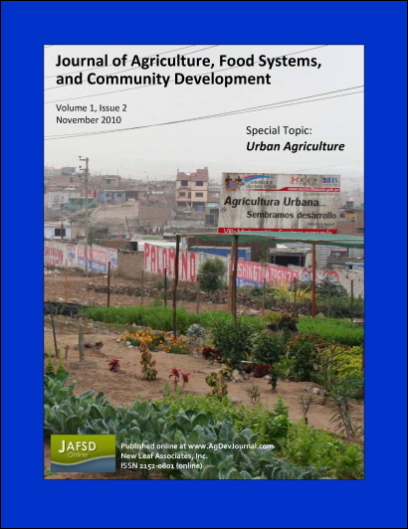Could Toronto Provide 10% of its Fresh Vegetable Requirements from within its Own Boundaries? Matching Consumption Requirements with Growing Spaces
DOI:
https://doi.org/10.5304/jafscd.2010.012.008
Keywords:
Urban Agriculture, Land Inventory, Vegetable ConsumptionAbstract
Is it feasible for Toronto to produce and market 10% of its fresh vegetable requirements from within its own boundary, without competing with existing Ontario vegetable producers? We used zoning maps, aerial photography, and numerous exclusionary and inclusionary criteria to identify potential food production sites across the city and, after identifying organic vegetable production yields, to calibrate supply potentials against current vegetable consumption estimates for the Toronto population. It was determined that Toronto required 2,317 hectares (5,725 acres) of food production area to meet current demand, if all production were organic to fulfill other municipal environmental objectives. Of this, 1073.5 ha (2,653 acres) of land could be available from existing Census farms producing vegetables, lands currently zoned for food production, certain areas zoned for industrial uses, and over 200 small plots (0.4–2 ha or 1–4.9 acres) dotted throughout the northeast and northwest of the city. In addition, 1243.5 ha (3,072.8 acres) of rooftop space would also be required. The land and rooftop space available suggests, however, that there would be difficulties meeting requirements for land-extensive crops such as sweet corn, squash, potatoes, cabbage, carrots, and asparagus.
Metrics
Downloads
Published
How to Cite
Issue
Section
License
The copyright to all content published in JAFSCD belongs to the author(s). It is licensed as CC BY 4.0. This license determines how you may reprint, copy, distribute, or otherwise share JAFSCD content.













